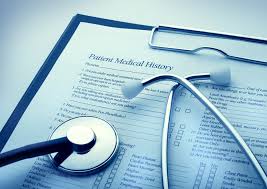MEANINGFUL USE 2 and PHR - I
The New and Revised Standards of meaningful use stage 2
requirements were recently released. The core items of this legislation are as
follows:
- Patients are provided online access to
their health information through a web portal on 50% of the occasions.
Further 10% unique patients actually view, download or transmit that data
to a third party.
- Successful on going submission of
electronic immunization data from certified Electronic Health Record technology
to an immunization registered is now a requirement. Previously on stage 1,
only a test was acceptable.
- Practitioners are supposed to provide a
summary of care record for 65% of transitions of care during referrals or
transfer of patient care settings. They are also required to electronically
transmit 10% across Electronic Health Records vendor types and
organizations. This measure is a combination of Stage 1 core items (problem
list, active medication list and active medication allergy list) to
emphasize increased data exchange.
A large component of this stage is patient engagement. Therefore health care givers should enable
tracking of online accesses by patients. This should be viewed and downloaded
and may include the transmission of events in a human readable format of PHI
like diagnostic test results, medication list, problem list, medication allergy
list, procedures, clinical summaries and discharge instructions.
Another
requirement of the rule is that more
than 10 percent of patients and any physician should correspond via the secure
messaging. Patients and physicians are encouraged
to communicate via text messages through a secure messaging or via an encrypted
mail. This way, patients will be able to reach their health care information from
their physicians in a timely manner due to the electronic access.
Health care givers who are participating in the stimulus
incentives program have to prove that they adhere to the rules and
requirements. This is where the use of Patient Health Records (PHR) becomes
important. This does not only help patients to access, organize and update
their health data but also assist qualified physicians meet part of the
requirements of the meaningful use. The PHR also gives patients the
opportunity to view, download and transmit their medical records online.
Patient Health Records (PHR) is a record kept
by a patient about their health information. This can be updated by the patient
and shared with their physicians. Health care gives can also update these
records during the patient visits. Therefore, the record consists of the
patient’s health data and information in relation to the care that they get
from health care givers. The patient has the liberty to choose the contents of
the PHR and further determine how the records are stored. They also have the
ability to choose what information their physicians have access to. This
greatly improves privacy and the patients are assured of their health
information security. The main purpose of a PHR solution is to provide an
accurate summary of a patient’s medical history which can be easily accessed.
This is further demonstrated by the way the PHR solutions provides a single
source for authentication and remote access of the health information data from
all EMR systems. The information included in the PHR is immunisation, lab
results, prescriptions, hospitalizations, medical tests, insurance information,
etc.
Some PHR systems are incorporated into the
Electronic Health Records or Electronic Medical Records such as,
- Patient
Ally which is part of the Office Ally EMR (Electronic Medical Records) which is also an accredited
EHNAC organization.
- Patient
Fusion which is freely incorporated into the Practice Fusion Electronic
Health Records.




Comments
Post a Comment
Thank you for your comments. Enjoy your reading!